 by Paul Schmid
by Paul Schmid
I think, therefore I am stuck.
Or, how I tell my brain to shut up so I can be creative.
Joseph Conrad once asserted that thinking is “…a destructive process, a reckoning of the cost. It is not the clear-sighted who lead the world. Great achievements are accomplished in a blessed, warm mental fog.”
In my 30 years experience as a conceptual artist, I too have observed that more ideas come to me seemingly as a gift from my intuition rather than directly from mental effort.
In fact, I often think thinking to be a hindrance to creating.
I am fond of my brain, and it serves me well for most things, but it does have the habit of quickly pointing out the problems and inconsistencies in my ideas. It also asks annoying questions, and is quick to doubt. It often unfairly compares my efforts to others, sometimes telling me rather bluntly that I am stupid and have no business doing what I am doing.
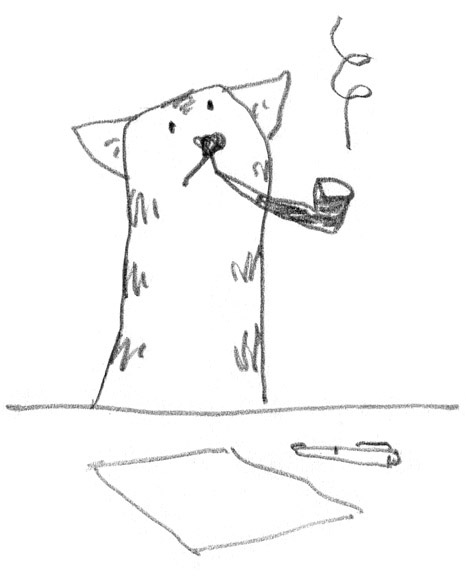
When I am beginning to search for fresh ideas, the last thing I need to hear are problems and limits (however correct my brain may be). Problems can be solved creatively, but first you must allow yourself to create the problem.
Creating is yearning, hoping, dreaming. Thinking is grounded, practical. When I am using my intuition, I am not listening to my rational head, but it’s more clever brother, the impulsive gut.
While the head doubts, the gut is eager to believe.
Brains like rules and order. Rules are dull. Obeying rules will not cause my manuscript to leap off the slush pile. As Susan Sontag remarked: “The only interesting ideas are heresies.”
My brain also tends to grasp at solutions, with a lazy preference for the first solution that shows up. But as a reader myself, I find surprises more deeply satisfying than solutions.
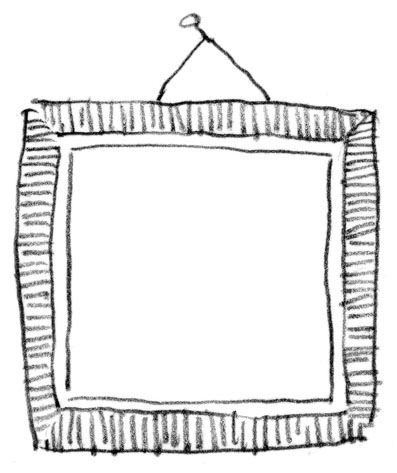
While creating stories I am often confronted with the power struggle between my gut and my brain. Since I use my brain most of the time, and am rational much of the day, it jumps first in line to help. It likes to be helpful. So, over the years I’ve acquired some tricks to lull my rational brain to passivity whilst inspiring my intuition to flow.
Have some pie and take a nap.
Thomas Edison was said to have sat in an armchair with two pie tins placed directly below the arms. In his hand he held two ball bearings. While keeping whatever project he was working on in his mind, he endeavored to nap. As he drifted into a relaxed state, his mind would begin to wander and flow in non-linear directions. Then as he became drowsy enough, his hands would relax their grip on the ball bearings, which dropped, clattering on the pie tins and rousing Edison. He would then immediately write down whatever thoughts he had at that time. It was his sneaky way of accessing his subconscious. It actually has a name: Hypnagogia.
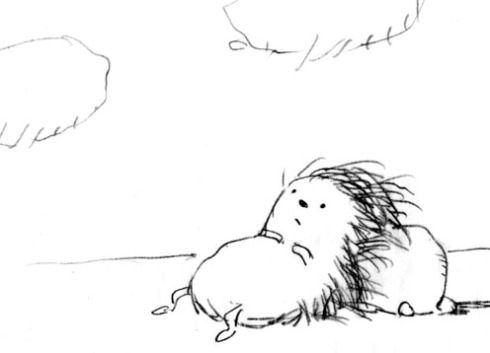
I will sometimes set a timer for 20 minutes, lay on my couch and drift off thinking of any current project’s roadblocks. My thoughts will gradually begin to get wacky and unrestrained. Sometimes quite unexpected solutions will just flow by.
Deny you have a problem.
When ideas aren’t flowing like… umm… whatever flows really well… the frustration can cause flow to stop. The mind gets involved because I am having problems and the mind loves to solve problems.
I then persuade myself that what I am really doing is simply waiting for an idea to show up. I find my intuition is rather demure. It does not flow smoothly, but resists order and regularity. I must have patience, then pounce when it ventures out. The following are some ways I do that.
Sneak up on it.
When I’m feeling stuck, I will put a project aside and move on to another. After a while, and when I am mentally involved in this new set of problems, I will suddenly go back to thinking of my original problem. A fresh idea will often present itself, as if it was really there all the time, but wearing an invisibility cloak.
Take a hike.
I am certain that physical activity confounds linear thinking. My own train of thought will get befuddled while I am moving about, apparently unable to walk and chew ideas at the same time.
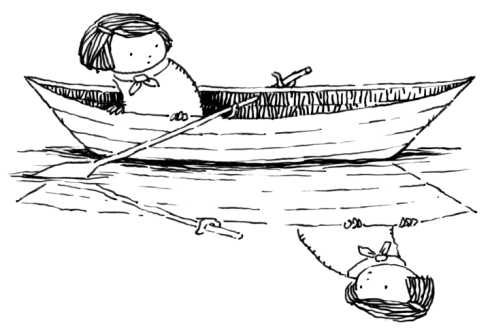
So when stuck, I get away from my desk and take a walk. Or make tea. Or fold laundry. And while my poor logical brain is overburdened and struggling, my intuition begins to frolic. Archimedes may have gotten his eureka’s in his bath, but most of mine arrive during a stroll in the neighborhood.
Loosen up.
John Cleese declares: “The main evolutionary significance of humor is that it gets us from the closed mode to the open mode (of thinking) quicker than anything else.” Just don’t spend too much time watching YouTube videos.
Try to fail.
Perhaps the most radical approach I use to thwart my logical mind set is to deliberately do something reckless so I can sit back smugly and see how bad it is. But many times I find myself putting down the bold solution I somehow knew it needed, but had been too afraid to attempt.
Let it be.
Similar to a flower, ideas can take time to blossom. Be a good gardener: get the dirt on the subject, lightly fertilize with inspirational work by others, firmly plant the seed, and then let things happen in their own sweet time.
I have become convinced that creative thinking is very like a muscle, the more you use it, the stronger it will be. Which allows me to end with Picasso’s words of caution: “Inspiration exists, but must find you working.”

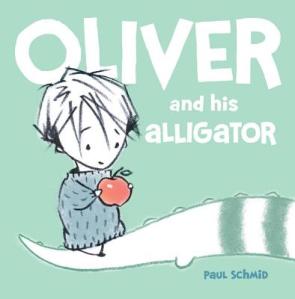 Paul Schmid is an author and award winning illustrator of children’s books, including OLIVER AND HIS ALLIGATOR, A PET FOR PETUNIA, HUGS FROM PEARL and PERFECTLY PERCY.
Paul Schmid is an author and award winning illustrator of children’s books, including OLIVER AND HIS ALLIGATOR, A PET FOR PETUNIA, HUGS FROM PEARL and PERFECTLY PERCY.
In the fall of 2010 Paul was awarded a month-long fellowship with Maurice Sendak.
He lives in Seattle with his wife, Linda, and their daughter Anna.
You can visit him online at PaulSchmidBooks.com.


 A Pet for Petunia
A Pet for Petunia
By Paul Schmid
Harper Collins Children’s Books
$12.99
ISBN: 978-0-0619-3315
Ages 4-8
On shelves now
When I was in ninth grade or so I learned that a fellow classmate owned a pet skunk. I joke not. Apparently these things do happen. While not strictly domesticated, it is possible to remove the scent glands from the animal, rendering it relatively harmless (teeth and claws aside). This was a good thing since if you grow up in Michigan you’re pretty much guaranteed to know the stink of the skunk (hopefully not firsthand). I assume that there must be kids in the world who don’t know this particular olfactory pleasure. And skunks, when viewed from a safe distance in a photo or a picture, are rather adorable looking. A Pet for Petunia is sort of made for both those kids who may be a bit unaware of the downside of skunk ownership and those others who are already in on the joke. Kids ask for all kinds of crazy pets. Few requests, however, are quite as uniquely skewed as those that involve animals that can turn you on to the wonders of tomato soup baths. In a field of I-want-a-pet-book A Pet for Petunia stands alone.
To know Petunia is to know her obsessions. And one obsession that Petunia is currently harboring is an overwhelming, almost incalculable desire to own a very particular animal as a pet: a skunk. Boy, she’d just do anything for a skunk. And when her parents tell her in no uncertain terms that this plan will not be happening their answer seems insufficient to her. Skunks stink? Clearly there’s a bit of parental prejudice at work here. After storming out of her house (“naturally Petunia must leave home”) as luck would have it she encounters her very own, one-of-a-kind, skunk! A real one! Yet as the age old adage says, be careful what you wish for. Sometimes you might just get it.
 The book is written entirely in the present tense, which I found interesting. At first I wasn’t quite certain why this was. Then I got to the moment when Petunia hears her parents say that skunks stink and launches into an offensive. The book goes from one sentence per page to about twenty-two sentences on a single page. I realized that sentences like “I bet Katie’s parents would get HER a skunk!” what the story sounded like. “A Pet for Petunia” is similar in many ways to the old Mo Willems tale Don’t Let the Pigeon Drive the Bus. Or, even more on the nose, The Pigeon Wants a Puppy. This means that the book may be perfect for readalouds to large groups of kids. I haven’t tested it out myself but I bet that a creative reader could have a lot of fun not only with Petunia’s somewhat familiar pleas, but also the book’s cute twist at the end.
The book is written entirely in the present tense, which I found interesting. At first I wasn’t quite certain why this was. Then I got to the moment when Petunia hears her parents say that skunks stink and launches into an offensive. The book goes from one sentence per page to about twenty-two sentences on a single page. I realized that sentences like “I bet Katie’s parents would get HER a skunk!” what the story sounded like. “A Pet for Petunia” is similar in many ways to the old Mo Willems tale Don’t Let the Pigeon Drive the Bus. Or, even more on the nose, The Pigeon Wants a Puppy. This means that the book may be perfect for readalouds to large groups of kids. I haven’t tested it out myself but I bet that a creative reader could have a lot of fun not only with Petunia’s somewhat familiar pleas, but also the book’s cute twist at the end.
Because Mr. Schmid is both the author and the illustrator, he’s allowed to have complete creative control over what the text of his picture

Hm, how do I describe this fabulous book to you all and serve it justice? I'm going to let author Amy
Krouse Rosenthal tell you because it's just plain cute and sums it up perfectly. This is on the front flap of the book:
Hello All,
Inside you will find stories, short poems, lists, palindromes, word games and random observations. Some parts are happy, some sad-ish, some silly, some serious, some crunchy, some soft in the center.
This book is full of stuff I've always wondered about...
Like:
- Did Miss Mary Mack have friends who liked other colors?
- Who hid something under the tooth fairy's pillow when she was a little girl.
- How do moms always know when you're about to sneak a cookie?
- Could everything important about the world be summarized in a poem that rhymes?
You can open the book anywhere and read. So the beginning could be the end, and the end could be the beginning. But I guess the middle is always the middle.
signed- Amy K. R
PS. Aren't Paul's drawings the best?!
Yes they are!! Paul Schmid's loose child like ink drawings are just screaming out to be colored. I can tell you if I had this book as a child I would be pulling out the colored pencils for sure. But as an adult I will just pour over the images over and over because they have so much life and movement in them. Sometimes I'm convinced they are actually moving- they are that animated.
I enjoyed this book so much that it's going as my sidebar pick for May as soon as I get off my "duff" and change it out. =o)

By Amy Krouse Rosenthal, illustrated by Paul Schmid
HarperCollins, 2010
$17.99, 9-12, 80 pages
Funny, irreverent and hopelessly cute, Rosenthal's book is a gem from start to finish.
Matched with the whimsical line drawings of Schmid, her poems capture all the charm and naivety of being little, and, in tone, remind me of sketches in Maurice Sendak and Ruth Krauss 1952 classic "A Hole is to Dig."
Every poem in the collection is a delight to read aloud, but most you won't want to recite without sharing the pictures, as there are lots of little details that add to the fun.
Take this funny twist on Shakespeare's line, "A Rose by Any Other Name," a little poem about intestinal gas.
Beside the poem, a girl stands pigeon-toed with a look of dread on her face for what just happened, as a skunk looks on at her from the next page, smitten by her malodorous mistake.
It begins, "In Spain it's called a pedo / In Hungary you'd pass a fing / In Dutch you'd say en wind lateen / When your bottom sings," and ends, "No matter where you come from / Or what language that you speak / It's just really really funny / To hear a tushy squeak."
Throughout the book, there are clever little plays on words, and smart collaborations between verse and pictures.
On one two-page spread, a scientist in oversized glasses points to a Periodic Table of how to behave. Above him the title reads, "For Those Who Periodically Need Reminding About Table Manners,'" and to his right, a chart of atomic numbers list the manners 1-13, each with its own symbol, such as "Bu" for "Refrain from burping at the table."
Some poems play out in short comic strips and one even comes with a funny warning.
Leading into a poem about spoiled children, a two-page spread shows a path
 by Paul Schmid
by Paul Schmid




 Paul Schmid is an author and award winning illustrator of children’s books, including OLIVER AND HIS ALLIGATOR, A PET FOR PETUNIA, HUGS FROM PEARL and PERFECTLY PERCY.
Paul Schmid is an author and award winning illustrator of children’s books, including OLIVER AND HIS ALLIGATOR, A PET FOR PETUNIA, HUGS FROM PEARL and PERFECTLY PERCY.






Wow! Interesting information about your process. Particularly love the Edison thing. Who knew? My best ideas have always been the ones that pop into my head while doing something else. Thanks Paul!
This post has some mind-boggling quotes and concepts! So, maybe someone needs to wake me up partway into my sleep in order to get great solutions to my ms! hmmm. And I like your quote that creative thinking is like a muscle… Thanks, Paul!
Thanks, Paul, for giving us permission to dream. Good post!
I love all your strategies for getting to that creative place!
I’m off to get some pie tins and ball bearings! Love reading about your process.
I have a problem that I’ve been trying to find a solution for so your post has encouraged me to keep working at it. Long walks usually help me too or doing something else creative before returning to my writing.
I’m smiling. I see 2 brains arguing, the logical one and the creative one. You’ve given me something to think about.
excellent ideas for breaking the block… I especially like the one about pie and napping!
My brain and my intuition were both inspired by your post. Thanks!
Going to hunt for ball bearings! Thanks!